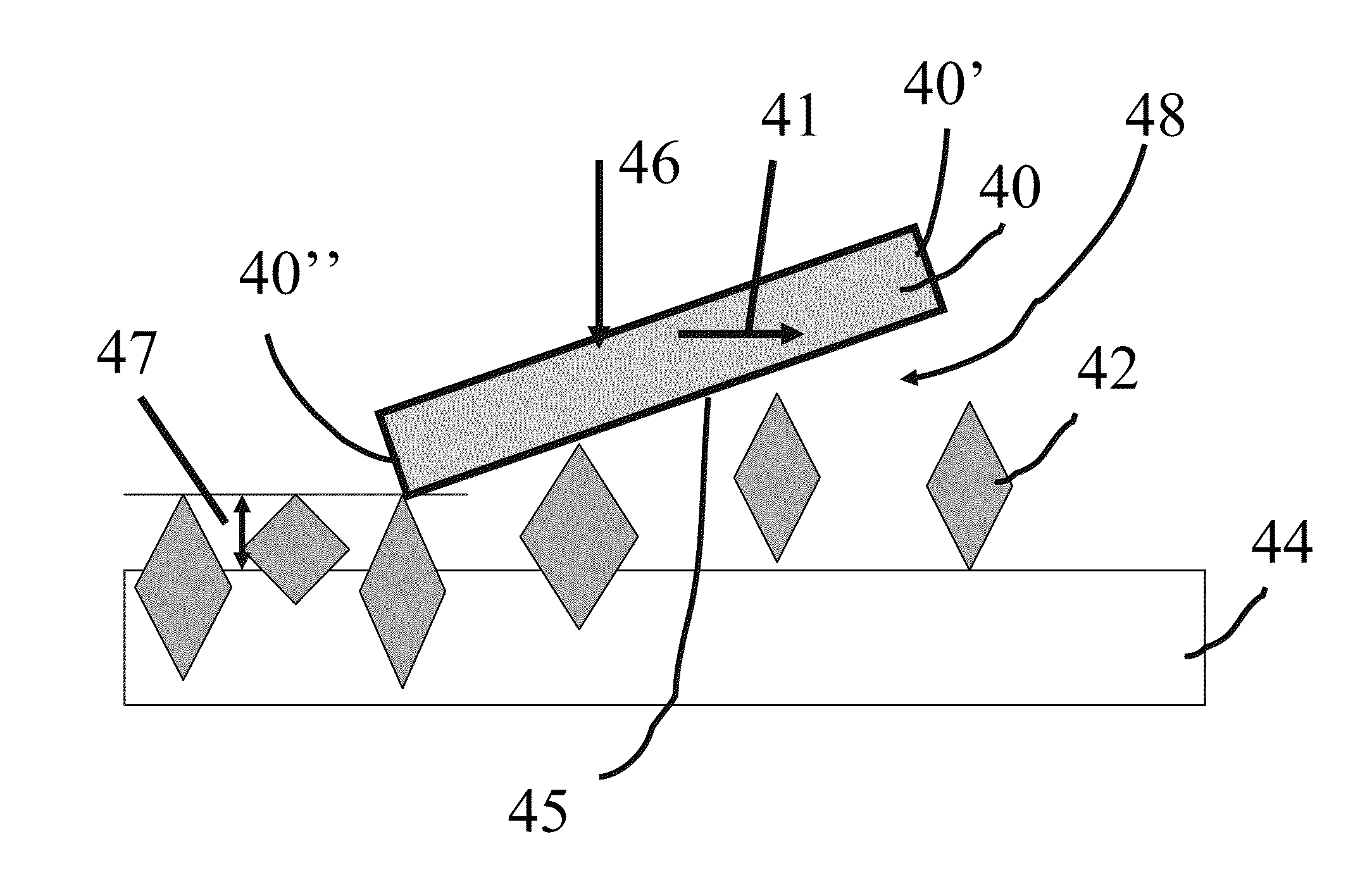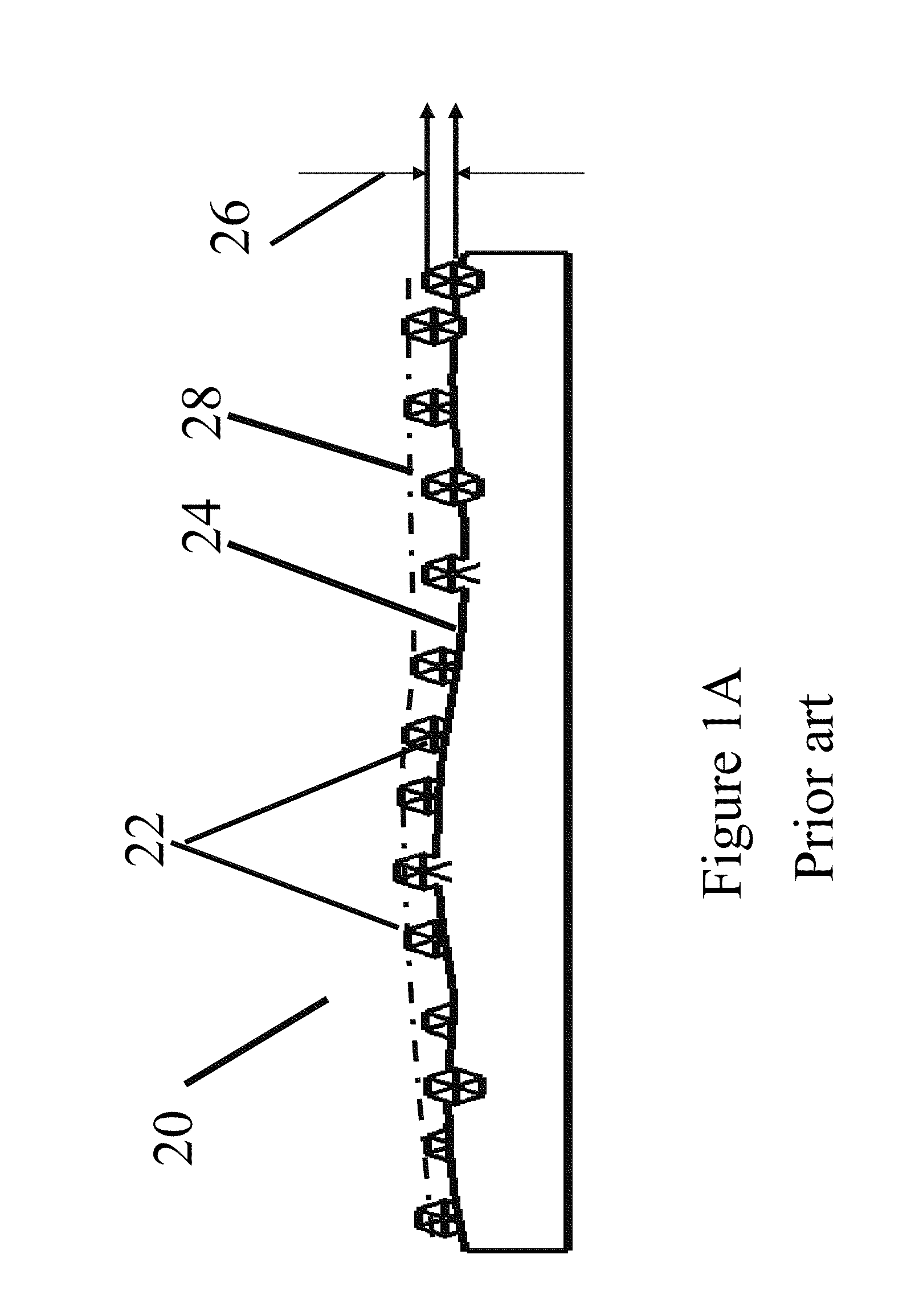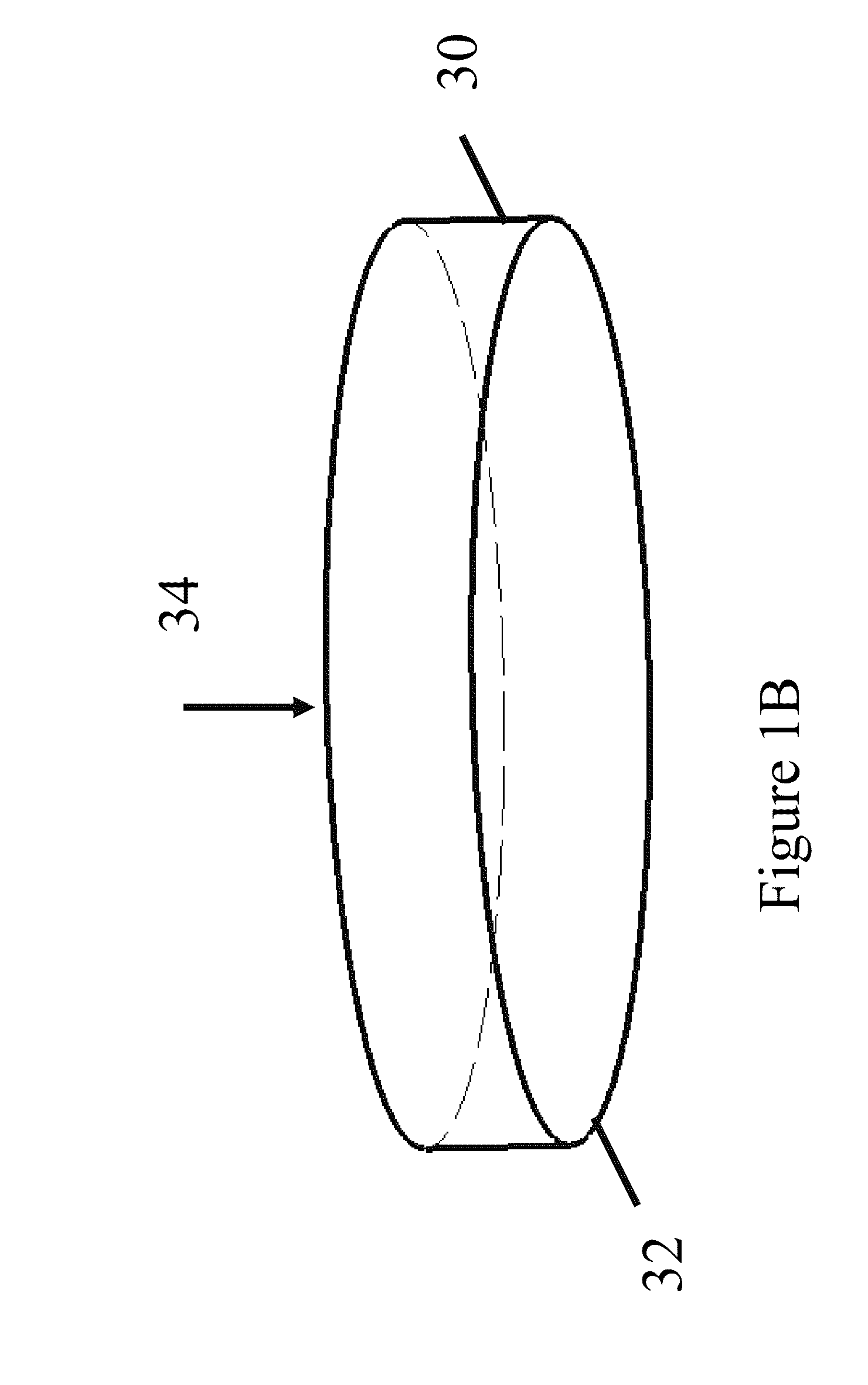Method and apparatus for embedding abrasive particles into substrates
a technology of abrasive particles and substrates, applied in the field of dressing bars, can solve the problems of large industrial waste generated by the process, scratches and damage to the bar, and the sharp outer edge 32/b> does not allow for efficient penetration of diamonds, etc., and achieves the effect of reducing or substantially lessening the excursion of the bar, and reducing the impact for
- Summary
- Abstract
- Description
- Claims
- Application Information
AI Technical Summary
Benefits of technology
Problems solved by technology
Method used
Image
Examples
Embodiment Construction
[0070]FIG. 4A is a schematic illustration of dressing bar 40 passing over a substrate 44. The dressing bar 40 is moved relative to the substrate 44, as indicated by arrow 41. The dressing bar 40 includes a leading edge 40′ and a trailing edge 40″. The dressing bar 40 uses a progressive interference to embed abrasive particles 42 into substrate 44. Progressive interference refers to a tapering gap interface 48 between active surface 45 of the dressing bar 40 and the substrate 44. In the illustrated embodiment, the dressing bar 40 is at an angle with respect to the substrate 44 to progressively embed the abrasive particles 42 into the substrate 44, resulting in a constant clearance 47 of the abrasive particles 42 relative to the substrate 44. The substrate 44 is also called a lapping plate after the particles 42 are embedded into the substrate 44. The interference can be adjusted by changing the clearance 47 at the trailing edge 40″ of dressing bar 40, the slope of the active surface ...
PUM
| Property | Measurement | Unit |
|---|---|---|
| diameter | aaaaa | aaaaa |
| thickness | aaaaa | aaaaa |
| height | aaaaa | aaaaa |
Abstract
Description
Claims
Application Information
 Login to View More
Login to View More - R&D
- Intellectual Property
- Life Sciences
- Materials
- Tech Scout
- Unparalleled Data Quality
- Higher Quality Content
- 60% Fewer Hallucinations
Browse by: Latest US Patents, China's latest patents, Technical Efficacy Thesaurus, Application Domain, Technology Topic, Popular Technical Reports.
© 2025 PatSnap. All rights reserved.Legal|Privacy policy|Modern Slavery Act Transparency Statement|Sitemap|About US| Contact US: help@patsnap.com



